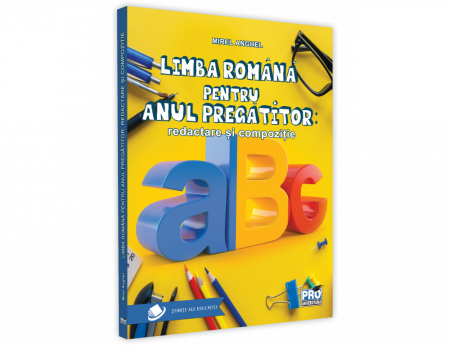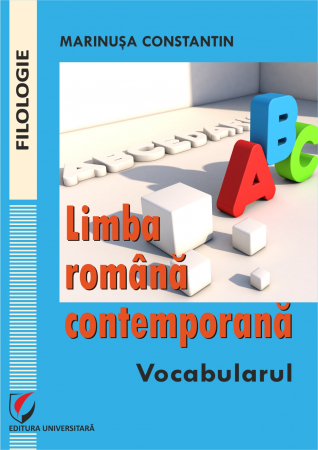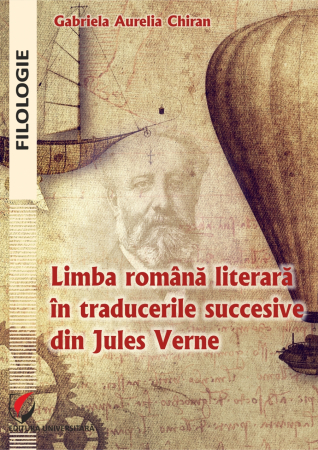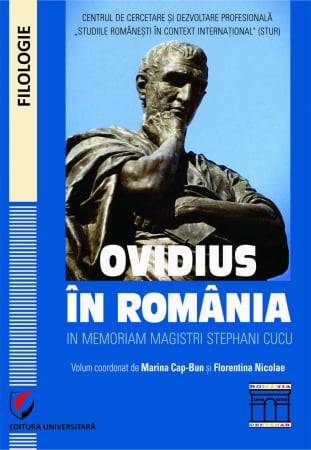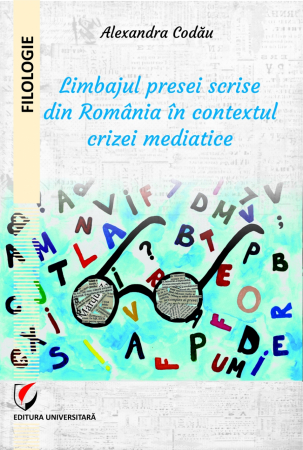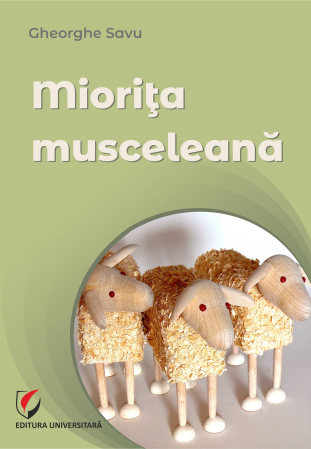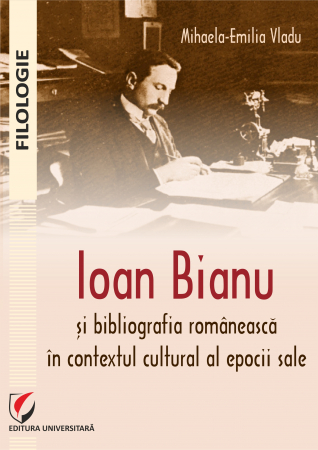ISBN: 978-606-28-1291-1
DOI: https://doi.org/10.5682/9786062812911
Publisher year: 2021
Edition: I
Pages: 248
Publisher: Editura Universitara
Author: Liliana Danciu, Petru Adrian Danciu
- Description
- Download (1)
- Authors
- Content
- More details
- Where to find it
- Reviews (0)
Authors
-
Dragons, devils and undead. Essays on the hermeneutics of the Romanian folk tale
Download
She is the author of the volume The novel from the novel: The Night of Sânziene (Romanul din roman: Noaptea de Sanziene), by Mircea Eliade, prefaced by Mircea Braga, published by Ideea Europeana Publishing House (2017). Receives the Prize for Debut in literary criticism of the Union of Romanian Writers, Sibiu branch (2018). He is one of the authors of the collective volume Myth, Music and Ritual. Approaches to Comparative Literature (editors: Rodica Gabriela Chira, Emilia Ivancu, Gabriela Chiciudean, Natalia Muntean), published by Cambridge Scholars Publishing (2018). He signs the prefects and prepares the anthologies Aurel Gurghianu (2019) and Magda Isanos (2020) and the afterword of the anthology Rodica Braga (2019), published in the collection "One hundred and one poems" from the Romanian Academy Publishing House. He is part of the Scientific College of the journal "EON" (2020).
He has published articles and studies in various scientific and cultural journals, such as "Journal of Humanistic and Social Studies", "Journal of Romanian Literary Studies", "Annales Universitatis Apulensis". Series Philologica ”,“ Incursions in the Imaginary ”,“ TricTrac: Journal of World Mythology and Folklore ”,“ SÆCULUM ”,“ Swedwish Journal of Romanian Studies ”,“ Eon ”,“ Contemporary ”,“ Star ”,“ Gnosis ”,“ Literary Resita ”,“ Euphorion ”etc. He participated in several scientific sessions, colloquia, symposia in the country and abroad (Rome, Arad, Targu Mures, Alba Iulia, etc.).
PETRU ADRIAN DANCIU is a doctor of philology with a thesis on the Romanian folk tale, defended at the University "December 1, 1918" in Alba Iulia (2018), the grade received "SUM CUM LAUDE". Member of the "Speculum" Imaginary Research Center ("December 1, 1918" University of Alba Iulia). Professor. Author of the volumes Theology of Divine Names in Ancient Egypt (2005) and Demonology of the Romanian folk tale. The reason for the kite (2019). Co-author in the collective volume Myth, Music and Ritual. Approaches to Comparative Literature (editors: Rodica Gabriela Chira, Emilia Ivancu, Gabriela Chiciudean, Natalia Muntean), published by Cambridge Scholars Publishing (2018). Member of the peer review committee of "EON" magazine. He has published several scientific articles in specialized journals such as “Tibiscum. Ethnography and History Studies and Communications ”, in the local publications“ Interferente ”,“ Gnosis ”(founding member and director) and international“ Journal of Romanian Literary Studies ”,“ Annales Universitatis Apulensis. Series Philologica ”,“ Incursions in the Imaginary ”,“ TricTrac: Journal of World Mythology and Folklore ”,“ SÆCULUM ”. He participated in national and international symposia in Timisoara, Deva, Alba Iulia, Targu-Mures.
Chapter I
Petru Adrian Danciu
ARCHETYPES, METAMORPHOSIS AND GNOSIS IN THE ROMANIAN FAIRY TALES / 13
I.1. Basmic reality / 13
I.2. Potent - Destiny - metamorphosis / 16
I.3. Bad metamorphosis: causes / 20
I.4. Cursed Metamorphosis / 23
I.5. Metamorphosis and gnosis / 29
Chapter II
Petru Adrian Danciu
THE PRESENCE OF KNIGHTS, ASPECTS OF EVIL CONTAMINATIONS IN THE FAIRY TALES AND THE ROMANIAN POPULAR ENCHANTMENT / 33
II.1. The magic of the profane / 34
II.2. The symptom of the disease as a demonic attribute / 37
II.3. The interaction is magic / 40
II.4. Sympathy, the cause of all misfortunes / 42
II.5. "To stand in the way", from the reason for the crossroads to the loss of symmetry towards the center / 46
II.6. Demon list or proof of acceptance / 50
II.7. The thirst for vitality / 54
Chapter III
Liliana Danciu
SHAMANIC INITIATION AND MAGICAL ALCHEMY IN TUGUNEA, AUNT'S SON / 57
III.1. Shamanic initiation / 60
III.2. Magical alchemy and inner metamorphosis / 67
III.3. Conclusions / 80
Chapter IV
Liliana Danciu
INITIATIVE SEXUALITY AND RITUAL SYMBOLISM IN TUGULEA, THE SON OF UNCLE AND AUNT / 82
IV.1. Myth, rite and initiation / 85
IV.2. The magical concealment of the knowledge of femininity / 95
IV.3. Conclusions / 103
Chapter V
Petru Adrian Danciu
SEXUALITY AND FERTILITY IN THE RITUALS OF BASMIC REALITY / 106
V.1. Profane status / 107
V.2. A new home / 109
V.3. Polarizations of the cult of sexuality / 114
V.4. The incubus kite and sexuality against nature / 120
Chapter VI
Petru Adrian Danciu
SAVING SEXUALITY THROUGH FAIRY TALES / 124
VI.1. Spiritual migration / 125
VI.2. The phenomenology of idolatrous migration / 127
VI.3. Saving sexuality through a fairy tale / 129
VI.4. Offensive of sexuality / 132
Chapter VII
Liliana Danciu
A BANATIAN FAIRY TALE WITH OWNS IN A DOUBLE READING KEY / 137
VII.1. Introduction / 138
VII.2. Fantastic "baroque" and magical-therapeutic ritual / 141
VII.3. The feminist implications of shamanic exorcism / 148
Chapter VIII
Liliana Danciu
SHAMANISM AND ARCHAIC RITUAL PRACTICES IN THE FAIRY TALE "THE WOLF WITH THE IRON HEAD" / 156
VIII.1. Shamanic universes and travels / 157
VIII.2. Shamanic symbolism and ritual parable in the folk tale The Iron-headed Wolf / 160
Chapter IX
Petru Adrian Danciu
BORDER SPACE AND MAGICAL BEHAVIOR IN ROMANIAN POPULAR FAIRY TALE WITH VIRGIN KIDDEN KIDS / 175
IX.1. The story as alive in the act of initiation / 176
IX.2. Loss and regaining proximity / 178
IX.3. What happens in the spatial proximity of the fairytale worlds? / 180
IX.4. Laws of border and proximity / 185
Chapter X
Petru Adrian Danciu
TOBIT BOOK, DIRECTORY MODEL FOR THE POPULAR IMAGINARY / 193
X.1. Defragmenting the myth in reconstructive syncretism of the basmic imaginary / 194
X.2. Periodization and construction / 199
X.3. The fairy tale between non-canonicality and tolerance / 203
X.4. The superstitious act, from disapproval to integration / 205
Chapter XI
Liliana Danciu
ALCHEMIC TOPOS AND HERMETIC IMAGINARY IN THE FAIRY TALE PRASLEA THE STRONG AND THE GOLDEN APPLES / 210
XI.1. Philosophical-hermetic gnoses, popular sources / 210
XI.2. Alchemical and imaginary hermetic moles / 220
BIBLIOGRAPHY / 231
In the present research I have permanently highlighted the fact that the fairy tale is a site of spiritual archeology. As far as we could, we avoided unnecessary associations, the great danger of speculation, but we did not exclude the obvious ones. The articles, now the chapters of this paper, approached from different perspectives the world of fairy tales, psychological (Jung's abysmal prologue), historical-religious, socio-anthropological, occult, magical and demonological, without fear of a "pulpit critique". The audacity to consider the possibility that the personality of the fairy-tale kite was historically inspired by that of a Semitic solar god or the statement that the hero, rarely a good-natured and disinterested character to win - how wrongly we consider him in association with Greek mythical variants that " they “inspired” the construction of the character - he can frown at those who still substantiate their research starting from the old patterns of interpretation.
The general view of the fairy tale may belong to a single science, but the depths of his research do not. The perspectives offered by the various sciences can no longer be seen as "pseudo-opinions", as what was once "adjacent", a "periphery" in the space of the unique / dogmatic interpretive act, can no longer be ignored today. The secret of our "speculation" lies in trying to combine not as many as possible, but only enough science to achieve a profound effect. Although the risk of error does not disappear, the approach of the fairy tale from multidisciplinary perspectives is required in an age of dissolution of the landmarks that have substantiated the research so far.
The chapters of this paper present the fairy tale from a perspective less known to the current reader. Permanently, our desire was to "fragment" the story and reinterpret it according to these puzzle pieces, some of them very old, pre-mythical. Thus, basmic archeology can be defined as the science that deals with the recovery of magical-religious beliefs and ideas from the "beds" or overlapping structures (themes), not only ordered, of the basmic direction. In other words, each major theme hides at least two layers, one mythical, the other premise, extremely important in the economics of hemeneutical understanding of seemingly modest stories, far from being listed as bestsellers, as in the case of the arch-known Youth without old age and life without death ...
One thing is certain: the keys to reading are inexhaustible and, most importantly, are not built exclusively on the sciences considered main or auxiliary in the process of analysis and interpretation. The art of interpretation belongs to the hermeneutic, even if it radiates from the acquired scientific knowledge. In its deepest spaces, the fairy tale is hidden, and its esoteric teaching can be revealed only if it is extracted very carefully. Its connection to any other type of knowledge either degrades it or highlights it, hence the great risk of speculation, seen by us as a continuous challenge.
Authors
Customer Support Monday - Friday, between 8.00 - 16.00
0745 200 718 0745 200 357 comenzi@editurauniversitara.ro
6359.png)
![Dragons, devils and undead. Essays on the hermeneutics of the Romanian folk tale [1] Dragons, devils and undead. Essays on the hermeneutics of the Romanian folk tale [1]](https://gomagcdn.ro/domains/editurauniversitara.ro/files/product/large/danciu_zmei-draci-si-strigoi_bt-3131-8622.jpg)

